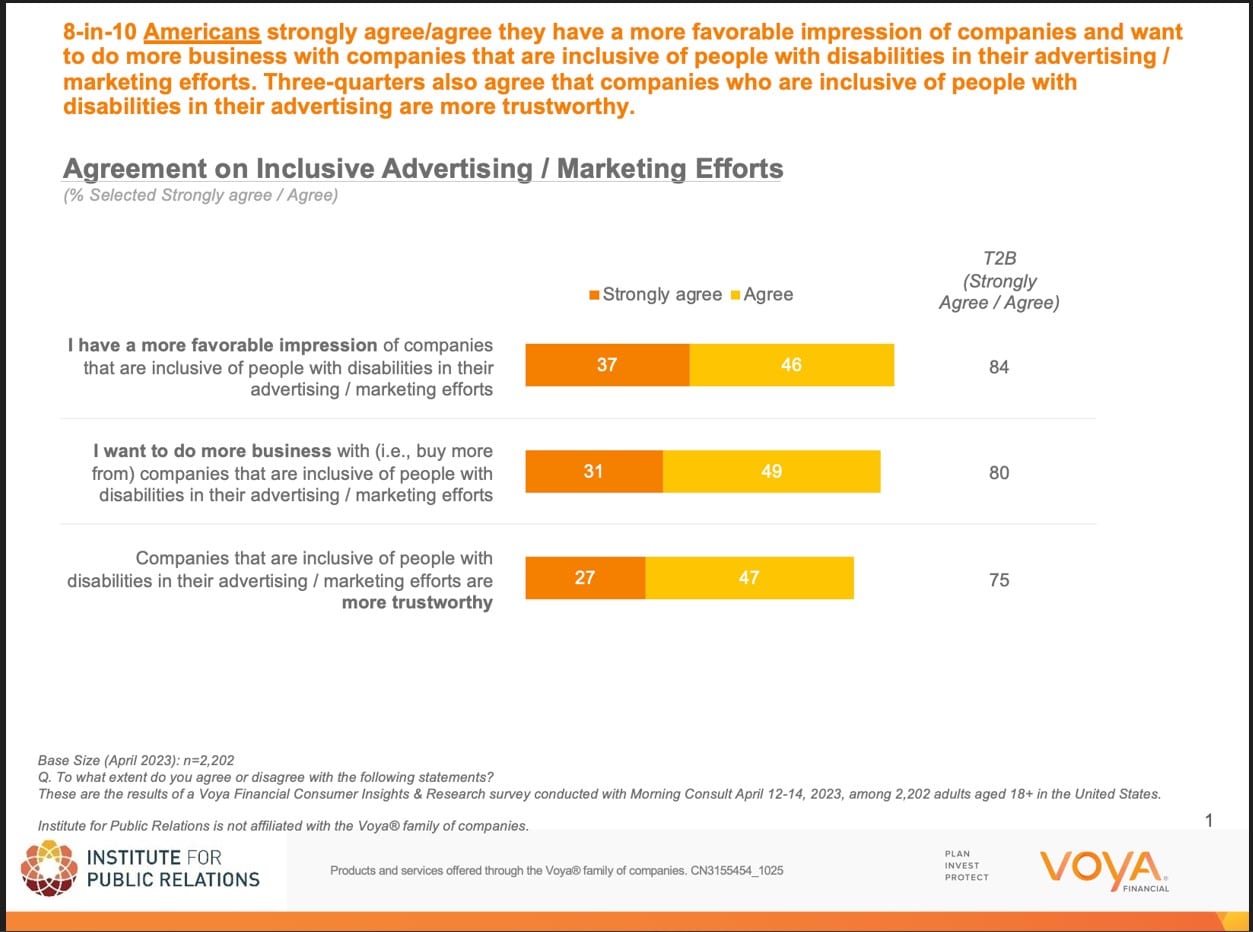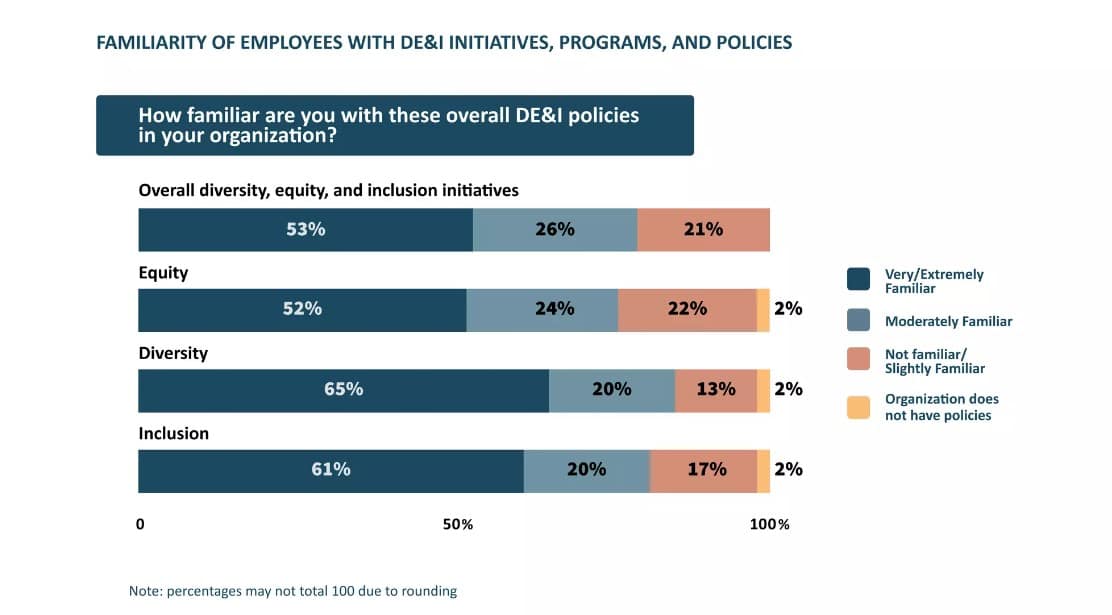They will view these companies more favorably, trust them more, and do more business with them.
Voya Financial recently partnered with the Institute for Public Relations (IPR) on a comprehensive research report titled “Disabilities in the Workplace: Culture, Communication, Support, and Inclusion” that analyzes a survey of 1,014 employees from various companies to determine how organizations support and communicate about disabilities and caregiving in the workplace and externally. The results align with what Voya has observed in recent years—and provide opportunities for brand, communications and marketing leaders to address audience needs and enhance brand favorability internally and externally.
Voya asked IPR to conduct the survey, and funded the IPR research, because we wanted to determine if what we have experienced during the past eight years extends beyond Voya. We have seen that inclusivity of people with disabilities in our brand communications, marketing and advertising activities has resonated with all stakeholder groups. One finding in the report—which is posted on the IPR website along with a webinar where IPR President and CEO Dr. Tina McCorkindale and I discuss it—is that despite nearly three-quarters (73 percent) of employees saying that they want to see people with disabilities represented in commercials, advertisements and social media, only 36 percent said that their organization actually features people with disabilities on these channels.

People with disabilities have been left behind in the collective brand, communications, marketing and advertising focus on inclusion
That finding was exactly why we asked IPR to conduct this research. At a time when society has made strong progress in ensuring that the brand, communications, marketing and advertising messaging that internal and external audiences see are inclusive—and reflect the diversity of our population—one marginalized group has been left behind. That group is people with disabilities.
According to CDC data from May of this year, 27 percent of U.S. adults have a disability of some type. However, we don’t see anything close to that level of representation in the current state of branding, communications, marketing and advertising. In fact, Nielsen Ad Intel data that looked at nearly 450,000 primetime ads on broadcast and cable TV in February 2021 found that just 1% included representation of disability-related themes, visuals or topics. And while it’s true that most disabilities are not visible, those numbers indicate that there is little to no attention being given to inclusivity when it comes to people with disabilities in branding, communications, marketing and advertising.
Morning Consult consumer data tracks with IPR study on desire for disability inclusion
The IPR findings provide an excellent employee perspective. And while employees are also consumers, we wanted to complement the IPR study with consumer-focused research. In April, at our request, Morning Consult connected with 2,200 U.S. adults on the topic of companies that are inclusive of people with disabilities in their marketing and advertising. Here are the results: 84 percent of respondents have a more-favorable impression of companies that are inclusive of people with disabilities in their marketing and advertising; 80 percent want to do more business with these companies; and 75 percent find these companies more trustworthy.

Voya’s experience aligns with IPR and Morning Consult findings—disability inclusion lifts the brand
We have seen this first-hand at Voya. Our Invest in Something Special social media campaign with Special Olympics in November 2017 achieved almost twice as many engagements as we planned and earned Voya finalist recognition at the 2018 ESPN Sports Humanitarian Awards, while also coming in under budget. Our casting of individuals with disabilities in our TV commercials in recent years has resulted in our most effective ads and led to unsolicited positive feedback from consumers, employees, investors and influencers. And we have heard from clients that our visible and authentic commitment to disability inclusion has been a factor when choosing to do business with Voya.
We are inclusive of people with disabilities because it’s part of our organizational DNA—and we have seen the positive impact that it’s had on our brand.
An industry call to action for brand, communications, marketing and advertising leaders
So why are so few companies being inclusive of people with disabilities in their brand, communications, marketing and advertising activities? I don’t know, but it needs to change. The disabilities community includes all of the other marginalized communities in society—and it’s a group that anyone can join at any time.
A company cannot claim to be fully inclusive from a brand, communications, marketing and advertising perspective if it’s excluding—even passively—people with disabilities. If this was the case with other marginalized groups, it would be considered discriminatory—and there would be a call to action for change.
We are respectfully sharing the IPR research as well as the other data points in this article because we want to advance disability inclusion in all aspects of society. There is a clear opportunity for those leading brand communications, marketing and advertising to help drive the positive change that our audiences are telling us they want. And, through the work of IPR and other professional organizations, we are looking to work with others to drive this change.



